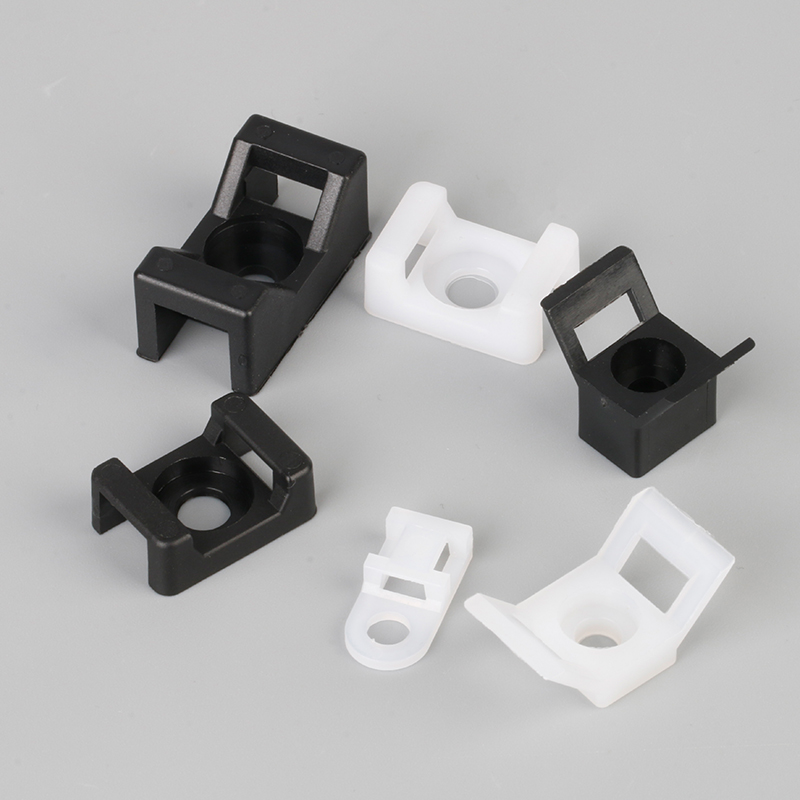Web Menu
Product Search
Exit Menu
Adhesive Cable Tie Mount — User Insights and Application Trends
Many users consider Adhesive Cable Tie Mount and ask: why select an adhesive mount instead of a screw-mounted option? Many users highlight ease of installation and cleaner aesthetics as major benefits. The ability to quickly secure cables without drilling or damaging surfaces makes adhesive mounts popular for office setups, home electronics, and light industrial applications. Users often ask: “Will adhesive mounts hold heavy cables on walls or panels?” Experiences vary, but generally the mounts perform well on smooth, clean surfaces and for moderate loads.

Adhesive Cable Tie Mount Compared to Mechanical Mounts
How does an adhesive mount perform against screw-in or rivet-mounted alternatives? Users point out several considerations. Adhesive mounts offer rapid installation, no need for tools, and maintain a clean, low-profile appearance. Mechanical mounts provide stronger, more durable fixation, especially for heavier loads or outdoor applications. Users frequently compare tensile strength ratings: typical adhesive mounts can handle around 30 pounds of load, while mechanical mounts often exceed this by a wide margin. For light-duty cable bundling indoors, adhesive mounts suffice. For outdoor, high-stress, or industrial scenarios, mechanical or hybrid mounts are often preferred.
Adhesive Cable Tie Mount in Real-World Applications
Users discuss practical issues and tips when using adhesive cable tie mounts.
Indoor electronics: Adhesive mounts are praised for neat cable management behind desks, entertainment systems, and server racks. They allow multiple cable ties to anchor cleanly without drilling.
Panels and enclosures: Clean, smooth surfaces improve adhesion. Users note that dusty, greasy, or textured surfaces reduce holding strength. Pre-cleaning the surface is critical.
Outdoor or humid environments: Some users report that the adhesive can degrade over time under UV exposure or moisture. For critical outdoor installations, securing a mechanical backup is recommended.
In all cases, users emphasize understanding the expected load, surface type, and environmental exposure before installation. Many find adhesive mounts ideal for temporary or moderate load applications but supplement them with screws for permanent or high-load installations.
Material, Adhesive, and Lifespan Considerations
The material and adhesive quality are major factors influencing the lifespan of an adhesive cable tie mount. Nylon is commonly used due to its strength, flexibility, and resistance to temperature changes. Acrylic or foam-based adhesives provide varying levels of tack and durability. Users report that quality mounts maintain adhesion for one to two years under normal indoor conditions. Environmental factors such as heat, cold, moisture, or UV exposure can accelerate degradation. The consensus is that proper surface preparation, choosing a smooth substrate, and considering environmental conditions are key to long-lasting performance.
Conclusion
In conclusion, Adhesive Cable Tie Mount is a versatile solution for cable organization, offering fast installation, a clean appearance, and effective performance for moderate loads. Compared with mechanical mounts, adhesive options trade off ultimate strength for convenience and aesthetics. Users favor adhesive mounts for indoor setups, temporary installations, or areas where drilling is impractical, while mechanical or hybrid solutions are preferred for outdoor, heavy-duty, or long-term applications. Understanding the installation surface, load requirement, and environmental exposure ensures reliable performance. For any cable management project, adhesive cable tie mounts provide a practical and user-friendly option when matched to the task and environment.
News categories
Exhibition Information
Related Products

 +86-15558905711
+86-15558905711 +86-15057372736
+86-15057372736 [email protected]
[email protected] 105 Liuxiang Road, Liushi Town, Yueqing City, Wenzhou City, Zhejiang Province, China
105 Liuxiang Road, Liushi Town, Yueqing City, Wenzhou City, Zhejiang Province, China
 英语
英语 中文简体
中文简体 俄语
俄语 西班牙语
西班牙语











